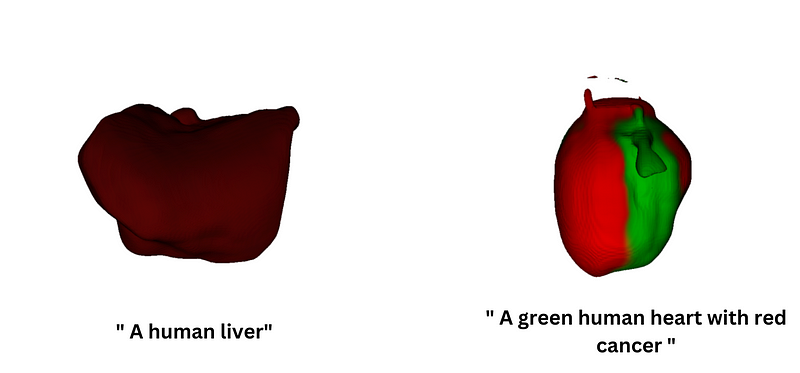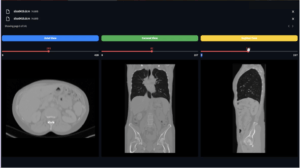A Revolutionary Tool for Generating 3D Assets with Implicit Functions

Introduction
The world of 3D modeling and design has experienced significant advancements in recent years, thanks to the rapid development of machine learning techniques. OpenAI has introduced a new tool called Shap·E, which uses implicit functions to generate 3D assets efficiently. In this blog post, we will explore the approach behind Shap·E and share the code provided by OpenAI for you to try it out yourself.
Background
Traditional 3D generative models produce a single output representation, but Shap·E is designed to generate both textured meshes and neural radiance fields simultaneously. This is achieved by leveraging implicit neural representations (INRs), which map 3D coordinates to location-specific information such as density and color. The Shap·E model is trained in two stages: first, a Transformer-based encoder is trained to map 3D assets into the parameters of an implicit function; second, a conditional diffusion model is trained on the outputs of the encoder.
The Power of Implicit Functions
Shap·E focuses on two types of INRs for 3D representation: Neural Radiance Fields (NeRFs) and Signed Distance Functions and Texture Fields (STFs). NeRFs represent a 3D scene as a function mapping coordinates and viewing directions to densities and RGB colors, while STFs generate both signed distances and texture colors. These INRs enable the generation of detailed 3D models without the need for extensive manual work.
Benefits of Shap·E
When trained on a large dataset of paired 3D and text data, Shap·E can generate complex and diverse 3D assets in a matter of seconds. It converges faster and achieves comparable or superior sample quality compared to explicit generative models like Point·E, while also offering multi-representation output space. Shap·E is an incredibly powerful tool for artists, designers, and developers who want to create detailed 3D models with minimal effort.
Shap-E for Medical Imaging

Shap·E, with its ability to generate complex 3D assets quickly and efficiently, can be highly beneficial for medical imaging in several ways:
- Enhanced visualization: Shap·E can generate high-quality, detailed 3D models from medical scans (such as CT or MRI scans), providing medical professionals with better visualization of the anatomy, which can improve diagnosis and treatment planning.
- Personalized models: By generating accurate 3D models of patients’ organs, bones, or tissues based on their medical images, healthcare professionals can develop personalized treatment plans, allowing for better patient care and improved surgical outcomes.
- Medical education and training: Shap·E can be used to create realistic 3D models for medical education purposes. These models can help students and professionals understand complex anatomical structures and improve their skills in performing procedures or surgeries through simulations and virtual reality environments.
- Surgical planning and patient communication: Shap·E-generated 3D models can be used to plan surgeries, helping surgeons identify the best approach for a specific procedure. Additionally, these models can be utilized as visual aids during patient consultations, enabling clearer communication about the diagnosis, treatment, and potential outcomes.
- Prosthetics and implants: Shap·E can assist in designing and producing customized prosthetics and implants, ensuring a better fit and increased comfort for patients, ultimately leading to improved functionality and quality of life.
- Accelerating research: By generating accurate 3D models of biological structures, Shap·E can facilitate medical research in areas such as drug development, disease modeling, and the understanding of complex physiological processes.
In summary, the Shap·E tool can play a significant role in enhancing medical imaging by providing accurate, detailed, and personalized 3D models. These models can improve visualization, education, surgical planning, and patient care, while also accelerating research in various medical fields.
Coding Part
I have utilized the original notebook provided by OpenAI’s repository and made enhancements to facilitate installation and execution in Google Colab. This modification addresses common installation issues encountered on local machines and takes advantage of Colab’s powerful GPU support. The adapted example can be found directly in the repository here.
There is also the part to convert PLY to STL using trimesh.
import trimesh
# Load the PLY file
input_ply_file = 'test_outputs/heart_mesh_0.ply'
mesh = trimesh.load_mesh(input_ply_file)
# Convert the mesh to an STL file
output_stl_file = 'output_file.stl'
mesh.export(output_stl_file, file_type='stl')Conclusion
Shap·E is a game-changing tool that combines cutting-edge machine learning techniques to revolutionize the process of creating 3D assets. With its innovative approach, it offers an efficient and user-friendly way to generate high-quality 3D models for various applications. By sharing the code provided by OpenAI, we hope you’ll be inspired to experiment with this powerful tool and unlock new possibilities in the world of 3D modeling and design.

Don’t miss out on the latest news and trends in medical imaging. Subscribe to our newsletter at pycad.co/join-us to stay informed.
join-us – PYCAD
Computer Vision Newsletter Master the Field of Medical Imaging with Python Previously Sent Newsletters March 6, 2023…pycad.co



